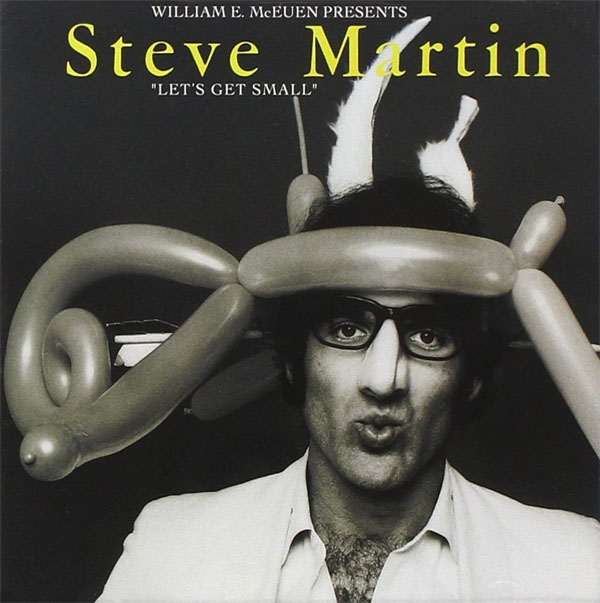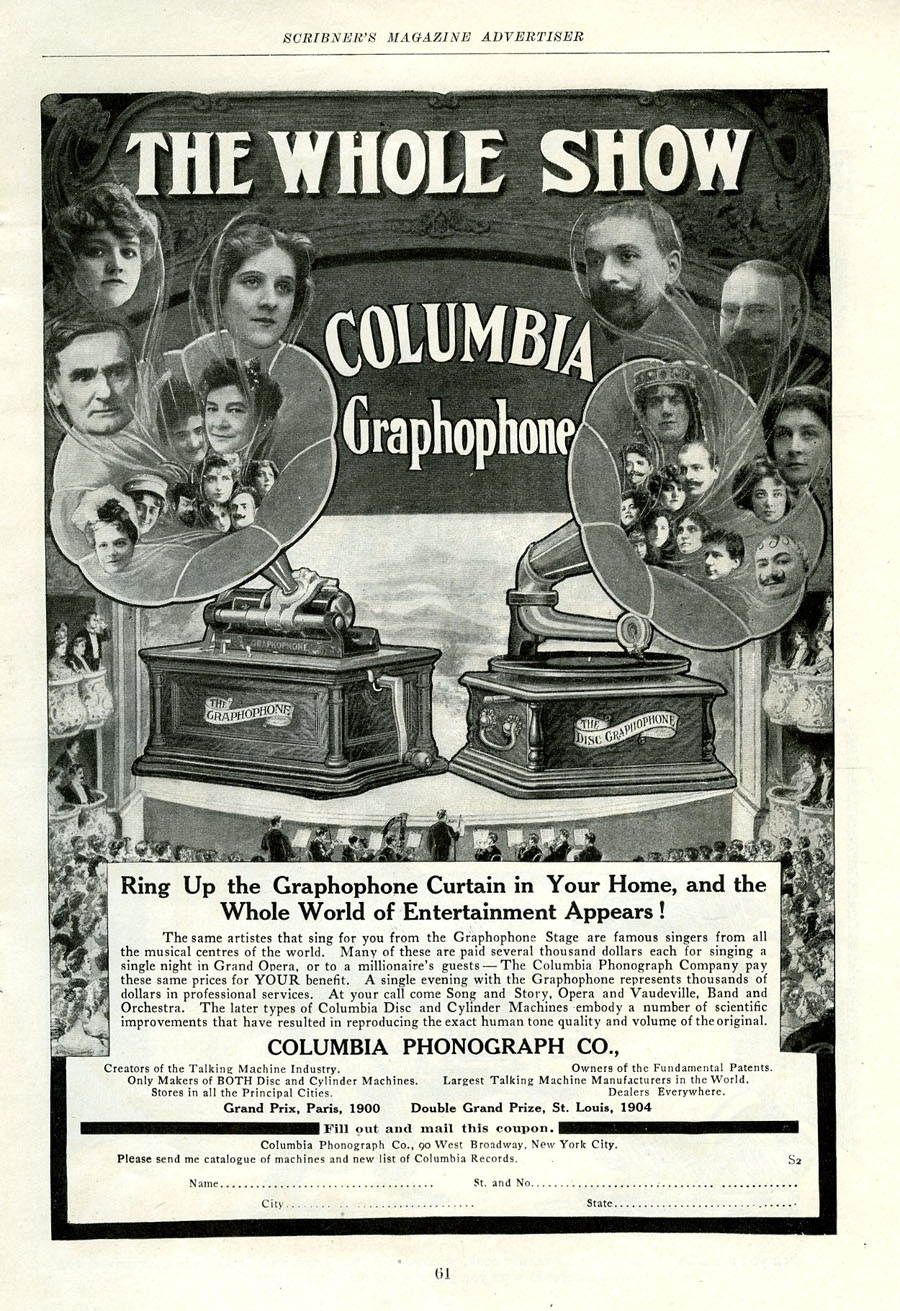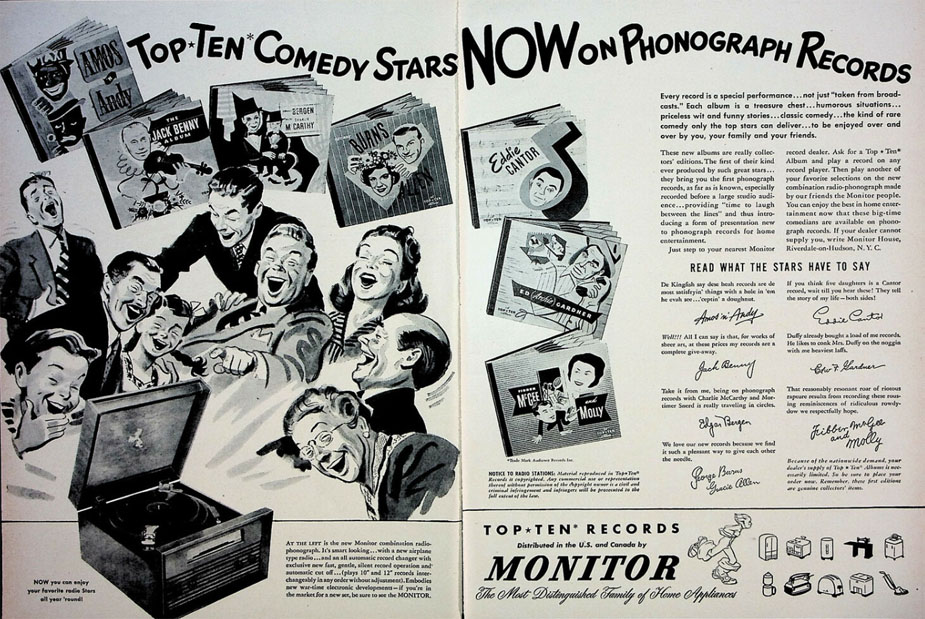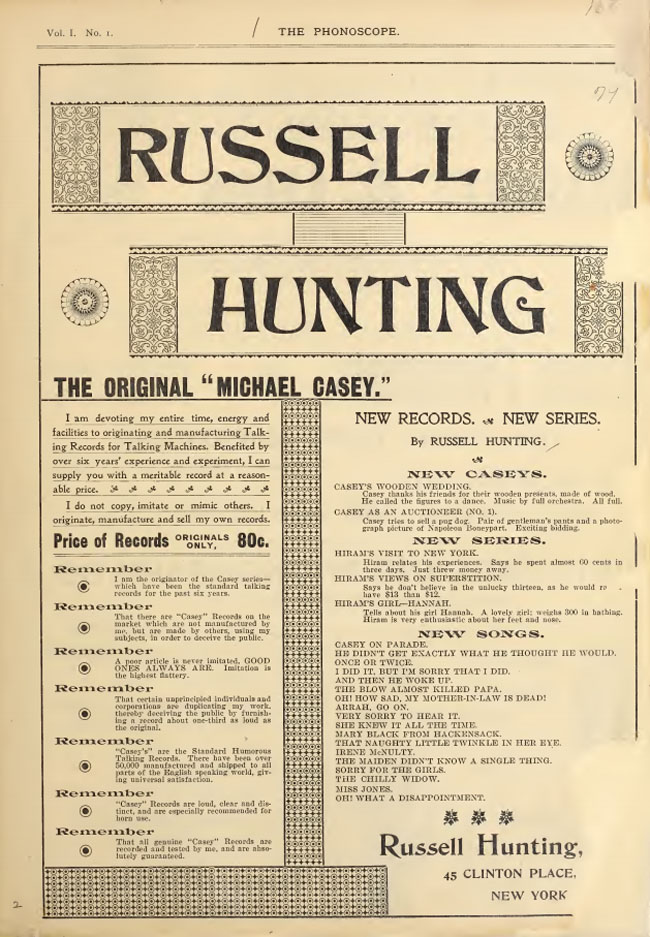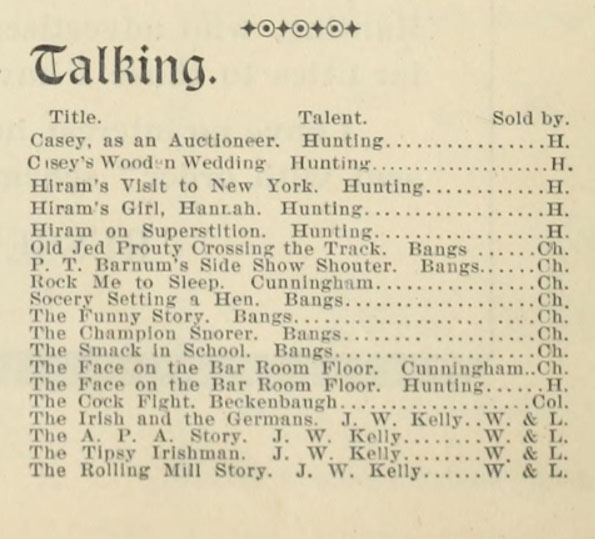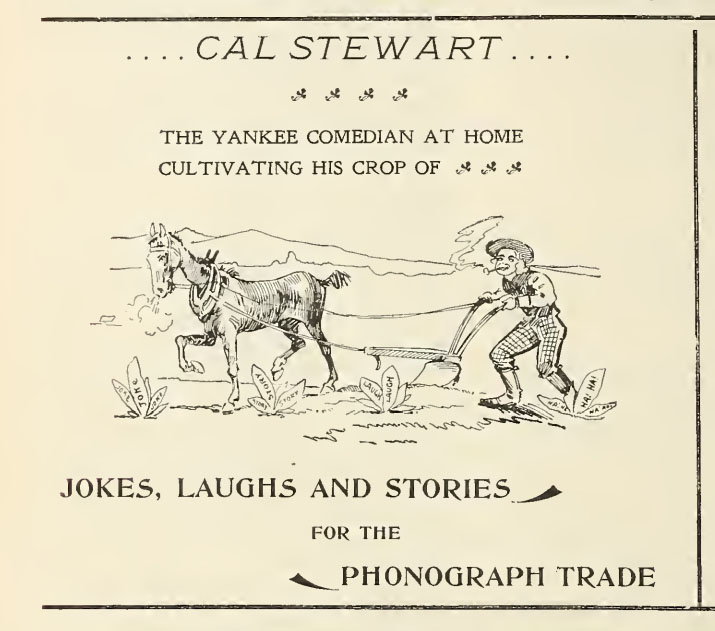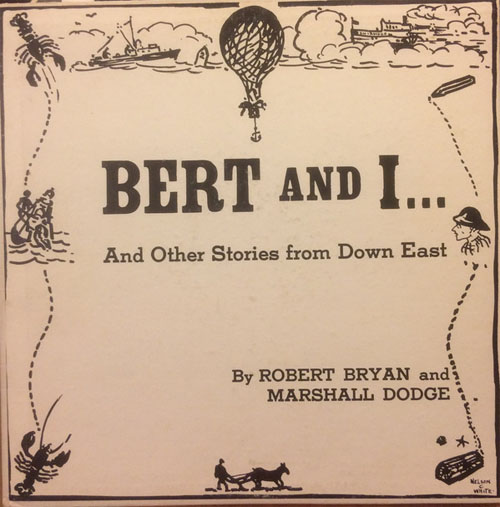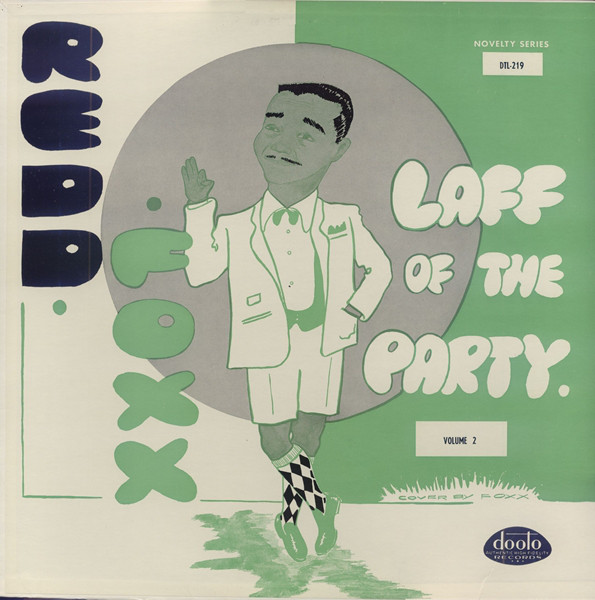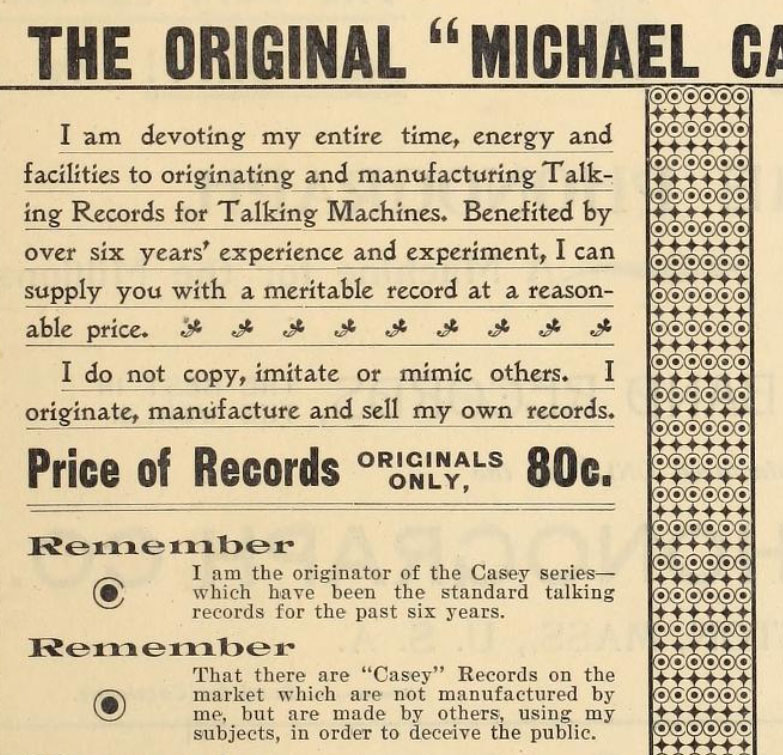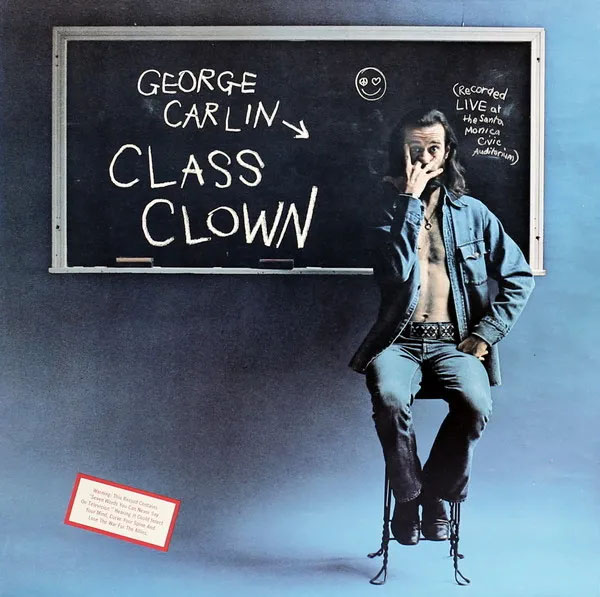Comedy on Records
Comedy Recordings from Cylinder to Vinyl
Four FACTOLAS are examined in this gallery that underlie Comedy on Records:
Recorded humor allowed the public to hear what they otherwise would not hear.
Recorded humor allowed the public to hear radio stars in new or old routines, repeatedly.
Recorded humor reinforced racial, ethnic and gender stereotypes.
Recorded humor could be heard by other comedians and then be copied, adapted or used to improve their own skills and style.
Hear What Otherwise Would Not Be Heard.
Humorous monologues and various 'sketch' records were original genres and included what was called "the whole world of entertainment" which was available to consumers if they owned a phonograph and records.
The following 1897 Columbia advertisement emphasized the Graphophone's ability to provide "inexhaustible delight" and to tell a good story, bringing "into the home the pleasures of stage and the concert hall...famous bands and orchestras, and popular singers and comedians..."
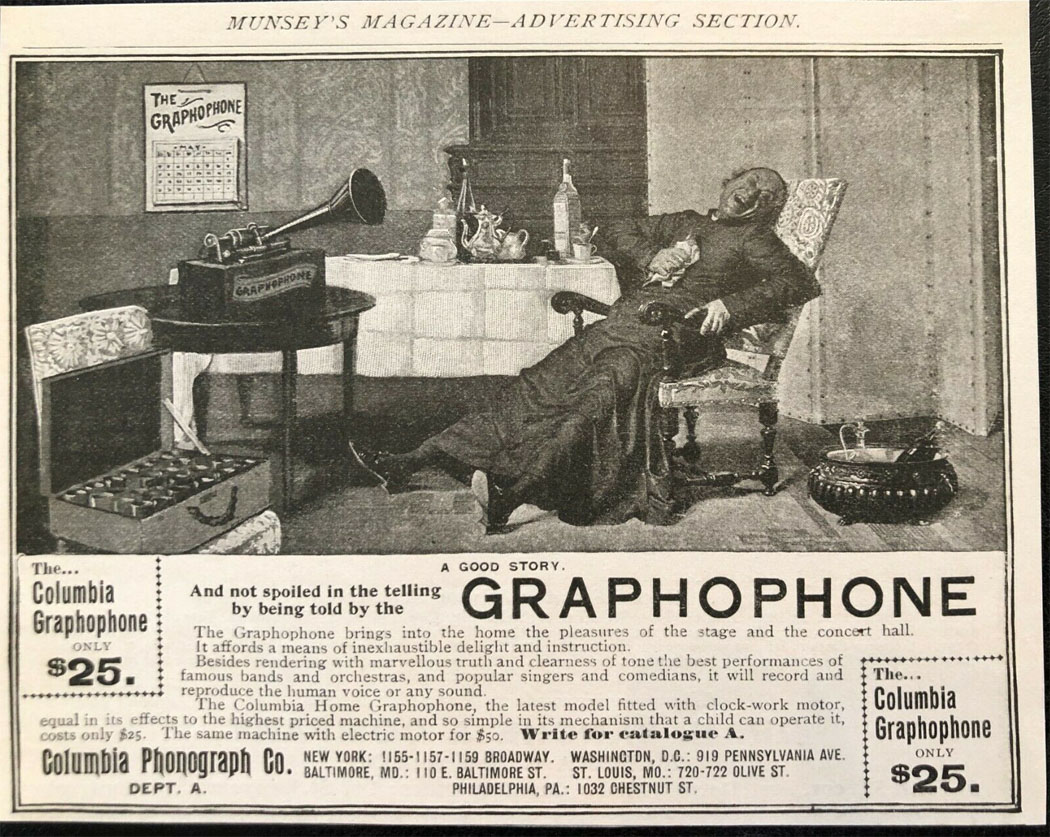
Munsey's Magazine, July 1897
The phonograph's repertoire was said to be unlimited and at your command. Entertainment was now yours that you would otherwise never have experienced.
"A single evening with the Graphophone represents thousands of dollars in professional services. At your call come Song and Story, Opera and Vaudeville, Band and Orchestra." - Columbia Phonograph Company, Scribner's Magazine, 1906
Hear radio stars performing new or old comedy routines.
Early radio stars performed comedy routines for live studio audiences, live broadcasts, and recorded broadcasts so that they could be sent to other radio stations across the country or played for a specific radio time-slot.
Comedy routines released as consumer records could be purchased and enjoyed in the home again and again.
"Every record is a special performance..." Monitor Top Ten Records, 1947
Racial, ethnic and gender stereotypes reinforced by dialect and subject matterEarly monologues of the 20th century classified as sketches or vaudeville had numerous 'humorous' subjects and dialect recordings of "German dialect sketch, Scottish, Irish, Jewish, French, American, 'African-American', etc.
The UC Santa Barbara Library Disclaimer About "Dialect Recordings" explains the scope of the 'dialect recordings' which they have made available on-line from their cylinder records digital collection and their rationale for not excluding those records:
"Coon songs," "rube sketches," "Irish character songs," and other dialect recordings that were popular in vaudeville routines and genres of songs during the late 19th and early 20th century often contain negative stereotypes and portrayals of blacks and other ethnic groups. These recordings reflect the attitudes, perspectives, and beliefs of different times. Many individuals may find the content offensive. Some of these songs and recitations were written or performed by members of the ethnic group in question, while others were not, such as the tradition of blackface minstrelsy of whites performing caricatured portrayals of blacks. To exclude these cylinders from the digital collection would deprive scholars and the public the opportunity to learn about the past and would present a distorted picture of popular culture and music making during this time period."
One of the most popular pre-1900 recording artists was Russell Hunting, "an American comic entertainer, pioneer sound recordist, and an influential figure in the early years of the recorded music industry....He became famous for his series of comedy sketches about an Irish character named Michael Casey. The recordings consisted of rapid-fire cross-talk between two characters, with Hunting taking all the parts." (Wikipedia).
Hunting also introduced his New Series of "Hiram" records in 1897. Hiram, and his girl friend Hannah are both apparently Jewish, and in the following advertisement Hiram is characterized by comments he makes about money.
HIRAM"S VISIT TO NEW YORK. Hiram related his experiences. Says he spent almost 00 cents in three days. Just threw money away.
HIRAM'S VIEWS ON SUPERSTITION: Says he don't believe in the unlucky thirteen, as he would to have $13 than $12.
The Phonoscope, November 1896
New Records for Talking Machines - Talking. The Phonoscope, November 1896
Another early recording star was Cal Stewart known for his "Yankee" humor in the the persona of Uncle Josh Weathersby. His monologues always included his famous laugh, a laugh the Edison company called "infectious". His story telling usually found him at home in Punkin Center where he observed the events of his time under such titles as "Uncle Josh and the Lightening Rod Agent" and "Uncle Josh Buys an Automobile"; "Uncle Josh at the Dentist's and "Moving Pictures at Pumpkin Center."
From a popular culture perspective, Stewart's subject matter could be summarized as monologues using stereotypical depictions of "rubes" and "Yankees".
The Phonoscope, July 1898
The impact of dialect stories of phonograph recordings, and most profoundly on the relationship between stereotypes of the black male and humor heard in the dialect stories, was the reinforcement of racial, ethnic and gender stereotypes for generations. Joseph Boskin's book Sambo: The Rise & Demise of an American Jester provides this summary regarding the use of humor to oppress its targets with his conclusion about the relationship between stereotypes of the black male and humor:
"This stereotypical image of the black male, which developed during the Colonial period, extended into all regions and classes, pervading all levels of popular culture for over two centuries. It stands as an outstanding example of how American society has used humor oppressively." - Sambo: The Rise & Demise of an American Jester by Joseph Boskin, Oxford University Press ©1986.
Bert and I...And Other Stories from Down East was an record produced in 1958 by Robert Bryan and Marshall Dodge which used stories and humor based on New England life. The regional dialects and droll sense of humor used to tell the stories, however, are not promoting any agenda that I can see other than to entertain with simple tales and colloquial phrases. Far from using dialect humor or subject matter to reinforce stereotypes or leverage power over anyone, this album is considered by many to be an icon of Maine with a legacy of good memories for all who grew up listening to these records or for even those hear it now for the first time.
Copy, Adapt Material or Use to Improve Skills and StyleImprove Skills and Style
A 2018 television episode of The Marvelous Mrs. Maisel included an example of recorded humor being used by another comedian to improve their own skills. Referencing a Redd Foxx comedy album in a scene that takes place circa 1958, Bustle Entertainment described this scene as follows (identifying it as one of the 14 best pop culture references in the series The Marvelous Mrs. Maisel):
"One of the comedy albums Susie tasks Midge with listening to in order to hone her craft is by comedian Redd Foxx, who was known for his provocative comedy in the '50s and '60s before he starred on the sitcom Sanford and Son. His comedy helps Midge realize a new way of exploring stand-up."
Redd Foxx, Laff of the Party, Volume 2, 1956 (Courtesy Discogs)
Copy and/or Adapt material
Hunting, as the original "Michael Casey", saw his 'Casey' character stolen by other performers and record companies. In a full page ad in The Phonoscope's November 1906 edition Hunting wanted to make it clear that his Casey records had set the standard and that he didn't "copy, imitate or mimic others." Said Hunting. Others that make "Casey Records" using my subjects...deceive the public."
"I do not copy, imitate or mimic others." - Russell Hunting, The Phonoscope, November 1896
POSTSCRIPTHere is a list titled 42 Essential Comedy Recordings originally posted in June 13, 2013 by The Interrobang with this introduction:"For over 60 years, the comedy album has been the best way for comedians to express whatever they wanted without direction from an executive or show runner. Even with the advent of new technologies, the album has stood the test of time, becoming a cornerstone in bringing their material directly to the public. Some of the greatest comedy that has ever existed can be found on this list. Use it. Enjoy it. There is nothing on this list that will waste your time."
George Carlin, Class Clown, Little David Records, 1972
For more examples of the phonograph bringing the world into your home, see "The Stage of the World."
Record and Album Cover Factolas
